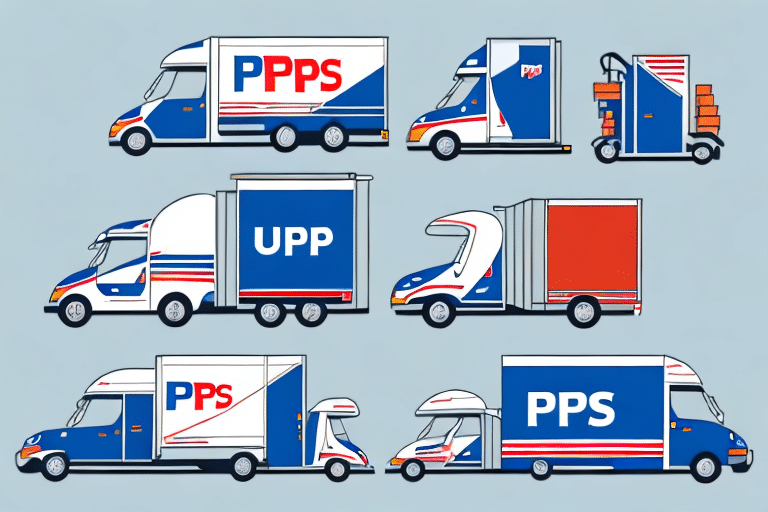Introduction to UPS and USPS
If you are a business owner or an individual who frequently sends and receives packages, you may have encountered the two leading shipping carriers in the United States: UPS and USPS. Understanding the distinctions between UPS and USPS can help you make informed decisions based on your unique shipping requirements. This article explores the services, pricing, delivery times, and other key features of both carriers to help you determine which one best fits your needs.
Company Background
UPS (United Parcel Service)
Founded in 1907 in Seattle, Washington, UPS has grown into a multinational package delivery and supply chain management company, operating in over 220 countries worldwide. Known for its brown delivery trucks and uniforms, UPS offers a wide range of shipping options, including ground, air, and international services. Beyond package delivery, UPS provides logistics and supply chain solutions for businesses of all sizes.
USPS (United States Postal Service)
Established in 1775, USPS is an independent government agency responsible for delivering mail and packages to every household and business in the United States. Operating more than 31,000 post offices and employing over 600,000 workers, USPS offers various shipping options such as Priority Mail, First-Class Mail, and Media Mail. In recent years, USPS has faced financial challenges due to declining mail volumes and increased competition from private carriers.
Services Offered
Delivery Services
Both UPS and USPS provide a variety of delivery services, including ground shipping, air shipping, overnight and expedited options, and international shipping. UPS offers specialized services like UPS Express Critical for urgent deliveries, while USPS provides services tailored for individuals and small businesses, such as First-Class Mail for lightweight packages.
Additional Services
UPS extends its service offerings with programs like UPS My Choice, allowing customers to customize delivery preferences, reroute packages, and receive delivery alerts. USPS offers services such as PO Box rentals, shipping supplies, and mail forwarding for those who move frequently. Additionally, both carriers provide options for package tracking, insurance, and signature confirmation to enhance security and reliability.
Pricing and Shipping Rates
Pricing structures differ significantly between UPS and USPS. Generally, UPS tends to be more expensive, especially for heavier and larger packages, but it offers more reliable and faster delivery services. UPS's pricing is often justified by its consistent delivery times and comprehensive tracking features, making it a preferred choice for businesses requiring timely deliveries.
USPS offers more cost-effective shipping options, particularly for smaller packages and non-expedited deliveries. Services like USPS Priority Mail Flat Rate can provide predictable pricing, making it ideal for individuals and small businesses looking to minimize shipping costs without sacrificing reliability.
Both carriers offer additional services like insurance and tracking, which can affect the overall shipping costs. It's essential to consider these factors when comparing rates to select the most cost-effective option for your specific needs.
Delivery Times and Reliability
UPS is renowned for its fast delivery options, with services like UPS Next Day Air and UPS 2nd Day Air guaranteeing delivery within specified timeframes. These services are ideal for businesses that require prompt and reliable shipping. Moreover, UPS offers guaranteed delivery times for certain services, providing refunds or credits if packages do not arrive as scheduled.
USPS provides a range of delivery times, typically within one to three days for priority services. While USPS may not offer formal guarantees like UPS, it maintains a reliable delivery network, especially in rural areas, due to its extensive network of post offices and carriers.
Recent developments have seen USPS enhancing its e-commerce capabilities and expanding its package tracking systems, aiming to improve its service reliability amid increasing package volumes.
Tracking Features and Technology
Both UPS and USPS offer package tracking features, enabling customers to monitor the status and location of their shipments. UPS's tracking system is highly detailed, providing real-time updates and precise estimated arrival times. This level of detail is beneficial for businesses that need to manage their supply chain closely.
USPS's tracking system is effective but may offer less granular information compared to UPS. However, USPS has introduced Informed Delivery, a service that allows customers to preview their incoming mail and packages each morning, enhancing visibility into delivery statuses.
Additionally, both carriers are investing in new technologies to improve their tracking and delivery systems. UPS is exploring the use of drones and electric vehicles to enhance delivery efficiency, while USPS is focusing on modernizing its infrastructure to support increased package volumes.
International Shipping Options
For international shipping, UPS and USPS offer distinct services tailored to different needs. UPS provides a comprehensive range of international shipping options, including express services with customs clearance and brokerage support, making it suitable for businesses requiring swift and reliable international deliveries.
USPS offers multiple international shipping services, such as Priority Mail International and Priority Mail Express International, which are typically more cost-effective than UPS but may have longer delivery times. USPS's international services are well-suited for individuals and small businesses sending packages abroad without urgent delivery requirements.
Both carriers have restrictions on certain items that can be shipped internationally. It's critical to consult each carrier's guidelines to ensure compliance and avoid shipping delays or additional fees.
Customer Service and Support
UPS generally receives higher customer satisfaction ratings for its customer service, offering responsive support through various channels, including online chat, phone, and email. UPS provides robust online self-service portals that allow customers to manage and track shipments efficiently.
USPS also offers customer support through similar channels, but it may experience longer wait times due to high call volumes, especially during peak mailing seasons. USPS continually works on improving its customer service infrastructure to better handle the demands of its vast customer base.
Insurance and Liability
UPS offers higher liability coverage for packages, providing greater protection against loss or damage during transit. This is particularly advantageous for businesses shipping valuable or fragile items. In addition to standard coverage, UPS offers various insurance options to tailor protection based on the shipment's value and nature.
USPS provides lower coverage limits under standard services but allows customers to purchase additional insurance for a fee. While USPS's insurance options may be suitable for less valuable shipments, businesses with higher insurance needs may prefer UPS for its more extensive coverage.
Advantages of Using UPS over USPS
- Faster Delivery Options: UPS offers expedited services such as Next Day Air and 2nd Day Air, ensuring quick delivery times.
- Comprehensive Tracking: Detailed, real-time tracking provides greater visibility into package locations and estimated delivery times.
- Higher Insurance Coverage: UPS offers higher liability coverage for added protection of valuable packages.
- Advanced Logistics Solutions: UPS provides extensive supply chain and logistics management services for businesses.
Advantages of Using USPS over UPS
- Cost-effective Shipping: USPS generally offers lower shipping rates, especially for smaller and lightweight packages.
- Extensive Delivery Network: With over 31,000 post offices, USPS ensures delivery to even the most remote areas.
- Flat-rate Shipping Options: Services like Priority Mail Flat Rate provide predictable pricing for various package sizes.
- Additional Services: USPS offers services like PO Box rentals and mail forwarding, catering to individual needs.
Choosing the Best Shipping Option for Your Business
When selecting between UPS and USPS for your business, consider factors such as package size and weight, delivery speed requirements, tracking needs, and budget constraints. Businesses requiring fast and reliable deliveries with comprehensive tracking may benefit more from UPS, while those looking to minimize shipping costs for smaller packages may find USPS more suitable.
It's advisable to compare the specific services and rates of both carriers relative to your business's shipping patterns. Additionally, leveraging tools and programs offered by each carrier can further optimize your shipping strategy.
Tips for Saving Money on Shipping Costs
- Use Flat-rate Boxes: Both UPS and USPS offer flat-rate shipping options that can save money, especially for heavy or bulky packages.
- Compare Rates: Regularly compare shipping rates from both carriers to ensure you're getting the best deal.
- Negotiate Rates: If you ship frequently, negotiate better rates or discounts with your chosen carrier.
- Optimize Packaging: Use appropriately sized packaging to minimize dimensional weight charges.
- Take Advantage of Online Tools: Utilize online shipping calculators and discount programs provided by carriers to reduce costs.
Conclusion
Choosing between UPS and USPS depends on your specific shipping needs and budget. UPS offers faster delivery times, comprehensive tracking, and higher insurance coverage, making it ideal for businesses requiring reliable and swift shipping solutions. Conversely, USPS provides cost-effective shipping options with an extensive delivery network, suitable for individuals and small businesses aiming to minimize shipping costs without compromising on reliability.
By carefully evaluating factors such as delivery speed, pricing, tracking features, and customer service, you can select the carrier that best aligns with your shipping requirements. Implementing cost-saving strategies can further enhance your shipping efficiency and reduce overall expenses.






















